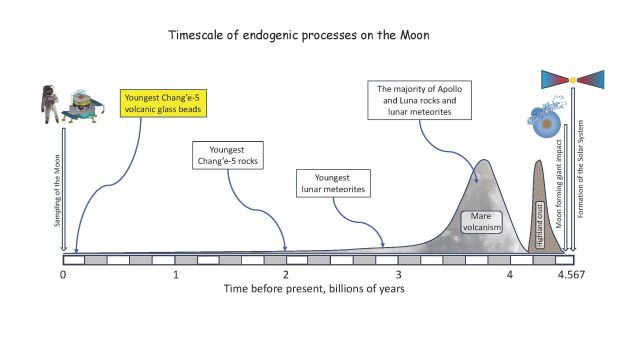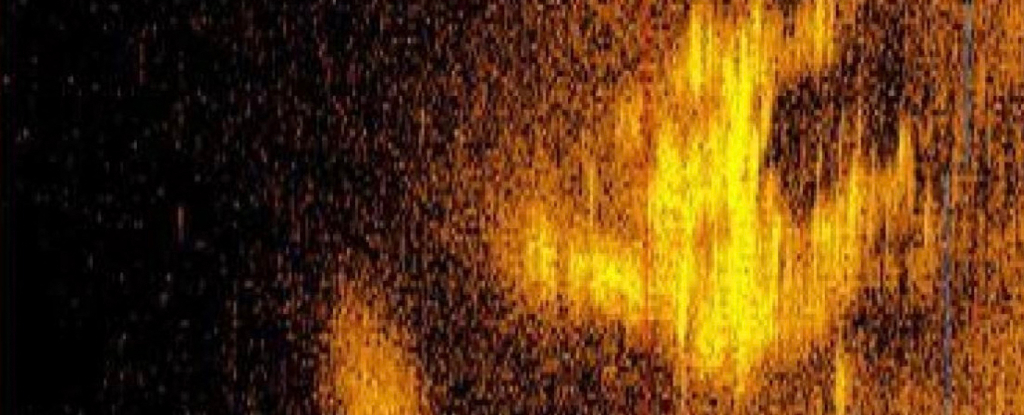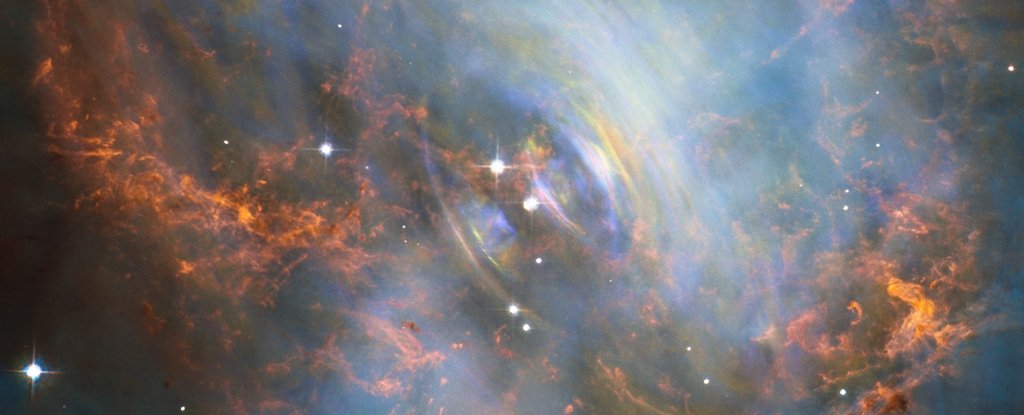ARTICLE AD
Three tiny, microscopic beads of glass retrieved from the surface of the Moon reveal that the wild past of Earth's largest natural satellite was actually not all that long ago.
According to a thorough and painstaking new analysis of material collected by the China National Space Administration's Chang'e‑5 mission, these once-molten minerals count as evidence of lunar volcanism that occurred as recently as just 120 million years ago.
That's significantly later than we expect to see such activity on the Moon, which was very volcanically active between around 4.4 and 2 billion years ago. After this, it's thought the Moon had cooled too much for significant volcanism.
The discovery reveals that the Moon still has many secrets – and we might just have to go there to get to the bottom of them.
"The radioisotope dating of the three Chang'e-5 volcanic glass beads provides the ground truth for 120-million-year-old volcanism on the Moon," geophysicist Yuyang He of the Institute of Geology and Geophysics at the Chinese Academy of Sciences told ScienceAlert.
"There is a ~1.9-billion-year gap between eruptions recorded at the landing site. The presence of such young lunar volcanism implies that small celestial bodies, such as the Moon, could maintain sufficient heat to sustain internal vitality until the very late stage."
When the Chang'e 5 sample of Moon dust was delivered to Earth's surface in late 2020, it became the first lunar material humans could lay hands on since the last of the Soviet Union's Luna probes returned in 1976. Using a whole range of analytical techniques, scientists around the world have been studying the heck out of this new selection of Moon bits to gain new insights into lunar geology and history.
 A timeline of our evidence of lunar volcanism. (Yuri Amelin)
A timeline of our evidence of lunar volcanism. (Yuri Amelin)One particularly exciting component of the sample consists of teeny tiny balls of glass. These form when minerals melt and then re-harden into glass under intense conditions. The glass particles can incorporate other lunar material that can be used to study the conditions under which the glass formed, including the composition of the Moon rock around it at the time.
Led by geophysicists Bi-Wen Wang and Qian W. L. Zhang of the Chinese Academy of Sciences, a team of researchers sifted through around 3 grams (0.1 ounces) of Moon dust from Chang'e 5. In just this small teaspoon of material, they were able to isolate around 3,000 glass spherules.
Most of these were the result of meteorite impacts, making any volcanic grains real proverbial needles in the haystack. The Moon is prone to a lot of impacts, and very little volcanic activity, so the researchers had their work cut out for them to identify which of the spherules – if any – were the product of the latter.
"First, we used backscattered electron images to identify ~800 glass beads with no obvious compositional variations or undigested inclusions, which is a feature of impaction," He explained.
"Second, we analyzed the selected beads using an electron probe microanalyzer. Only 13 glass beads have major element compositions similar to those of Apollo volcanic glass beads. Based on trace element composition, six of those 13 glasses have magnesium oxide-nickel abundance correlations that fall on the same trend as the volcanic glasses identified in the Apollo samples. All the above evidence is not conclusive."
Finally, they conducted sulfur isotope analysis using secondary ion mass spectrometry. Three of those final six spherules had sulfur ratios inconsistent with impact glass. They had a hit – this was the volcanic glass.
But then radiometric dating revealed the age of the spherules – around 123 million years ago, give or take 15 million years. That's far more recent than the last known time at which the Moon was volcanically active.
We don't know how this could have happened, since the Moon has been too cool for volcanic activity for a long time, but a clue could lie in the chemistry trapped in the three spherules. They contain a high proportion of what are known as KREEP elements – potassium, rare-earth elements, and phosphorus.
These high KREEP abundances can be sources of radiogenic heating; that is, the heat generated by radioactive decay. This heating can be significant. Around half of Earth's internal heat is from radioactive decay. On the Moon, radiogenic heating could, in theory, produce pockets of localized volcanism.
Further research could reveal whether there is sufficient KREEP material in the lunar mantle to produce these pockets.
"It is unclear how the Moon could have remained volcanically active at such a late stage; as the interior cooled and the lithosphere thickened, volcanic activity would have become less likely," He said.
"Where were those volcanic glass beads from? Is there other volcanic activity between 2 billion and 120 million years ago? What mechanism caused it? Further investigations are needed."
The research has been published in Science.

 2 months ago
20
2 months ago
20 

